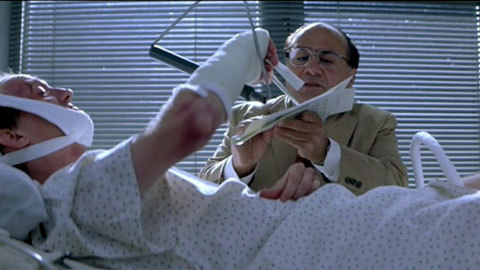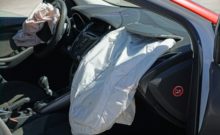Characters in Francis Ford Coppola’s The Rainmaker exemplify some great “scummy lawyer” archetypes. On the one hand, Danny DeVito portrays the quintessential ambulance chaser, practically ambivalent about professional ethics and ultimately interested in little more than his cut of the payout:
On the other hand, John Voight depicts the hard-fisted, cold-hearted, dishonest insurance attorney who will forego all ethical considerations in order to squish the little guy’s meritorious claim:
Tort law has occupied a surprisingly politicized stage in our national discourse. I’ve listened to some pundits argue damages caps and other so-called “tort reform” devices are the solution to the healthcare crisis, and I’ve heard others assert the tort reform movement is nothing but a stunt by large business interests seeking to keep potential plaintiffs out of court.
The debate has simmered for decades with varying levels of intensity. At one point it boiled over when the 1994 multimillion dollar verdict in Liebeck v. McDonald’s Restaurants, the “McDonald’s Hot Coffee Case,” hit the national news cycle. A massive PR campaign ensued, and in 2016 it seems clear the tort reform advocates have prevailed in the court of public opinion. The business and insurance interests—typical defendants in an injury lawsuit—simply had greater resources than their opponents.
I’m obviously simplifying things here, but it’s hard to argue against the fact that the ambulance chaser stereotype occupies the forefront of our collective cultural opinion about personal injury lawyers. I’ve known hardly anyone to think of the sneering John Voigt caricature when they picture defendants’ lawyers. But as a plaintiff’s attorney I am asked on a regular basis if I am an “ambulance chaser.” And let’s be honest, there are certainly lawyers out there who live up to the stereotype.
The term “ambulance chaser” is much older than this political discussion. It appears to have been coined in newspapers as early as 1897 and quickly became a derogatory term for attorneys practicing direct advertising to injury victims. As a result, in the early twentieth century many states began outlawing attorneys from engaging in any advertising activities at all. Such prohibitions were struck down, but not until 1977 in Bates v. Bar of Arizona, 433 U.S. 350 (1977). The Supreme Court interpreted such laws as violating the First Amendment rights of attorneys. But prohibitions on direct, in-person solicitation by attorneys have remained in place. Currently, the type of in-person solicitation the “ambulance chasers” used is strictly prohibited by the ABA Model Rules of Professional Conduct.
When I’ve participated in jury selection proceedings in injury cases, potential jurors readily refer to the McDonald’s case and are suspicious of plaintiffs and their attorneys who are “just trying to get money.” I suspect most of them would soften or silence their implied criticism of Ms. Liebeck if they knew she suffered third degree burns over her buttocks, thighs, and groin area down to the muscle and fatty tissues, requiring eight days of hospitalization while she received skin grafts over 16% of her body. I do not regularly see the same initial skepticism of defendants and their lawyers. To their credit, however, most potential jurors are very willing to remain open-minded and reserve judgment until they have heard the evidence.
As litigators, we’ve all had experience with bad lawyers who seem driven by slash-and-burn litigation strategies or who make little effort at professionalism. Such attorneys can exist on either side of the table in a personal injury case—or any other type of case at that. But the caricatures we see in TV and movies are the rare exception rather than the rule. As legal practitioners, we all have our individual political leanings, but in my experience personal politics don’t tend to play a significant role in the courtroom, where the outcome of the case is not driven by politics but by the individual merits of each claim.
And one more fun lawyer clip for the road:







